Kabbalah
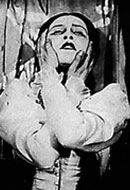 Of Devils and Dybbuks
Of Devils and DybbuksTuesday, November 30, 2010 by Allan Nadler | Jewish Ideas Daily » Daily Features
Many an enlightened reader of the New York Times must have indulged in yet another condescending laugh at the Catholic Church upon seeing a November 12 report about a conclave of bishops in Baltimore; the purpose was to discuss the urgent need for priestly experts in the task of expunging the devil from possessed parishioners. Among those chuckling, no doubt, were many Jews.
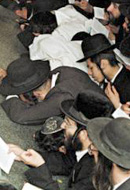 The Mad Mystic of Bratslav
The Mad Mystic of BratslavMonday, November 1, 2010 by Allan Nadler | Jewish Ideas Daily » Daily Features
Rabbi Nahman of Bratslav (1772-1811) is the strangest and most paradoxical leader in the history of Hasidism, and one of its most original, albeit mad, geniuses. Nahman has been an object of both literary fascination and considerable scholarly research. He also shares center stage with Franz Kafka (1888-1924) in Rodger Kamenetz's Burnt Books.
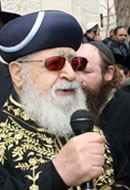 Rav Ovadia
Rav OvadiaTuesday, October 12, 2010 by Yehudah Mirsky | Jewish Ideas Daily » Daily Features
One of the more outsized personalities in Israel's history is Rabbi Ovadia Yosef, the longtime head of the Shas political party, who has just marked his ninetieth birthday. The foreign public knows of him, vaguely, as a right-wing fanatic. But the truth and perhaps the tragedy of the man are far more complicated and fascinating.
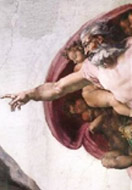 The God of the Kabbalists
The God of the KabbalistsWednesday, September 29, 2010 by Yehudah Mirsky | Jewish Ideas Daily » Daily Features
Judaism is often thought of, with justice, as a religion in which faith and dogma take a back seat to behavior and action. Yet the library of Jewish theology is rich—or at least it once was. For many religious Jews today, the multiple dislocations of the last few centuries have left a void where God used to be. Increasingly, though, and not a little surprisingly, that void is being filled by sophisticated theological works informed by the seemingly obscure and fantastic doctrines of Kabbalah, the Jewish mystical tradition.
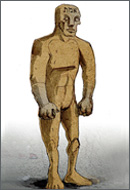 The Golem: Universal and Particular
The Golem: Universal and ParticularTuesday, September 14, 2010 by Benjamin Kerstein | Jewish Ideas Daily » Daily Features
The most famous and enduring of all Jewish legends is that of the golem, the artificial man. Indeed, with the possible exception of the demon Lilith, briefly pressed into service as a feminist icon, the golem remains the only post-biblical Jewish myth to be widely adopted by non-Jewish culture. Among its recent incarnations are a computer game that bears its name and the army of humanoids who populate James Cameron's film Avatar.
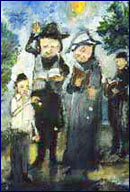 Repentance = Freedom?
Repentance = Freedom?Thursday, September 2, 2010 by Yehudah Mirsky | Jewish Ideas Daily » Daily Features
In the thick of the month of Ellul, nearing Rosh Hashanah, penitence is or should be in the air. Also recently marked was the 75th yahrzeit of the great mystic, jurist, and theologian Abraham Isaac Kook (1865-1935). As it turns out, Kook's teachings on the meaning of repentance are among his most striking, stamped with his distinctive mix of piety and audacity. In his eyes, teshuvah, generally translated as "repentance" but literally and more powerfully "return," signifies not only a deepened and renewed commitment to religion and commandments but, paradoxically, nothing less than a new birth of freedom.
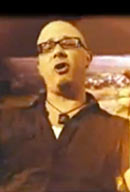 Psalms for the Perplexed
Psalms for the PerplexedWednesday, August 18, 2010 by Yehudah Mirsky | Jewish Ideas Daily » Daily Features
Some mainstream Israeli musicians have recently been turning for material to religious texts; others have become immersed in the musical traditions of Sephardi Jewry. The two trends have come together in a new album, Mizmorei Nevukhim ("Psalms for the Perplexed"), by Kobi Oz.
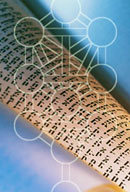 Kabbalah and its Discontents
Kabbalah and its DiscontentsFriday, August 6, 2010 by Aryeh Tepper | Jewish Ideas Daily » Daily Features
Aside from a small circle of students and admirers, Rabbi Yehuda Ashlag was an unknown figure at his death in 1954. Today, religious schools and New Age "educational centers" around the world are actively spreading his ideas, and his writings are being analyzed by professors and graduate students. After spending an hour in the rabbi's stone mausoleum, the pop-diva Madonna emerged with tears in her eyes. Who was this person to whom scores of pious (and impious) Jews and non-Jews are turning for inspiration?
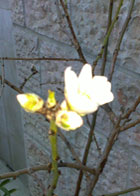 Tu b’Shevat: What Sorts of Trees are We?
Tu b’Shevat: What Sorts of Trees are We?Friday, January 29, 2010 | Jewish Ideas Daily » Daily Features
Deuteronomy 20, discussing the laws of war, and in particular siege, forbids the cutting down of fruit trees, adding, in an ambiguous and tantalizing phrase, "ki ha-adam etz ha-sadeh." The words can be translated as a simple if enigmatic statement ("for man is a tree of the field") or as a question (in the rendering of the JPS Torah,"are trees of the field human?"). The classical commentators were likewise divided. The Talmud, reading the phrase as a statement, is moved to offer a prototype of a human "tree of the field": a virtuous sage, a worthy teacher and role model. Rashi, the...
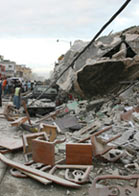 The Harshness of Creation
The Harshness of CreationLike the 2004 tsunami that devastated southeast Asia, yesterday's catastrophic earthquake in Haiti, a poverty-stricken country with a legacy of home-grown violence and suffering, inevitably provoked the terrible question: where was God? One answer derives from Jewish religious sources, and specifically from the teachings of the Kabbalah. It has to do with tzimtzum, or contraction: that is, God's own contraction and limitation of Himself in order to make space for the finite—and invariably flawed—worlds of physical nature and human action. The idea was most famously developed in Safed, Palestine by the 16th-century kabbalist Isaac Luria as part of a complicated, esoteric myth...
Editors' Picks
In and Out of the Ghetto Roni Weinstein, H-Net. Meet Benedetto Blanis, a Jew in early modern Florence who taught Hebrew, alchemy, and kabbalah to one of the Medicis.
From Our Archives: Kabbalah and its Discontents Aryeh Tepper, Jewish Ideas Daily. Aside from a small circle of students and admirers, Rabbi Yehuda Ashlag was an unknown figure at his death in 1954. Today, religious schools and New Age "educational centers" around the world are actively spreading his ideas, and his writings are being analyzed by professors and graduate students. After spending an hour in the rabbi's stone mausoleum, the pop-diva Madonna emerged with tears in her eyes.
Mystical Pleasures Peter Cole, Paris Review. There isn't a great deal of kabbalistic poetry, but the best of it epitomizes a potent if lesser-known aspect of Judaism. (Interview by Robyn Creswell)
Behind a Best Seller David Ruderman, Jewish Week. One of the most popular Hebrew books in the modern era was an 18th-century tome mixing science, kabbalah, ethics, and a then-radically open attitude toward non-Jews.
Was Rebbe Nahman of Bratzlav the Messiah? Justin Jaron Lewis, H-Judaic. Some of his followers may have thought so, but a newly translated "secret" scroll fails to cast much light on the issue.
Portrait of the Artist Ellie Armon Azoulay, Haaretz. Pinhas Cohen Gan on the meaning of life, including his own: "reduction, precision, making do with little, believing in God—and creating."
A Priceless Manuscript Goes Online Braginsky Collection. Containing comments on the Zohar, the classic work of Jewish mysticism, this is one of only four authentic documents by the hand of the Gaon of Vilna (1720–1797).

